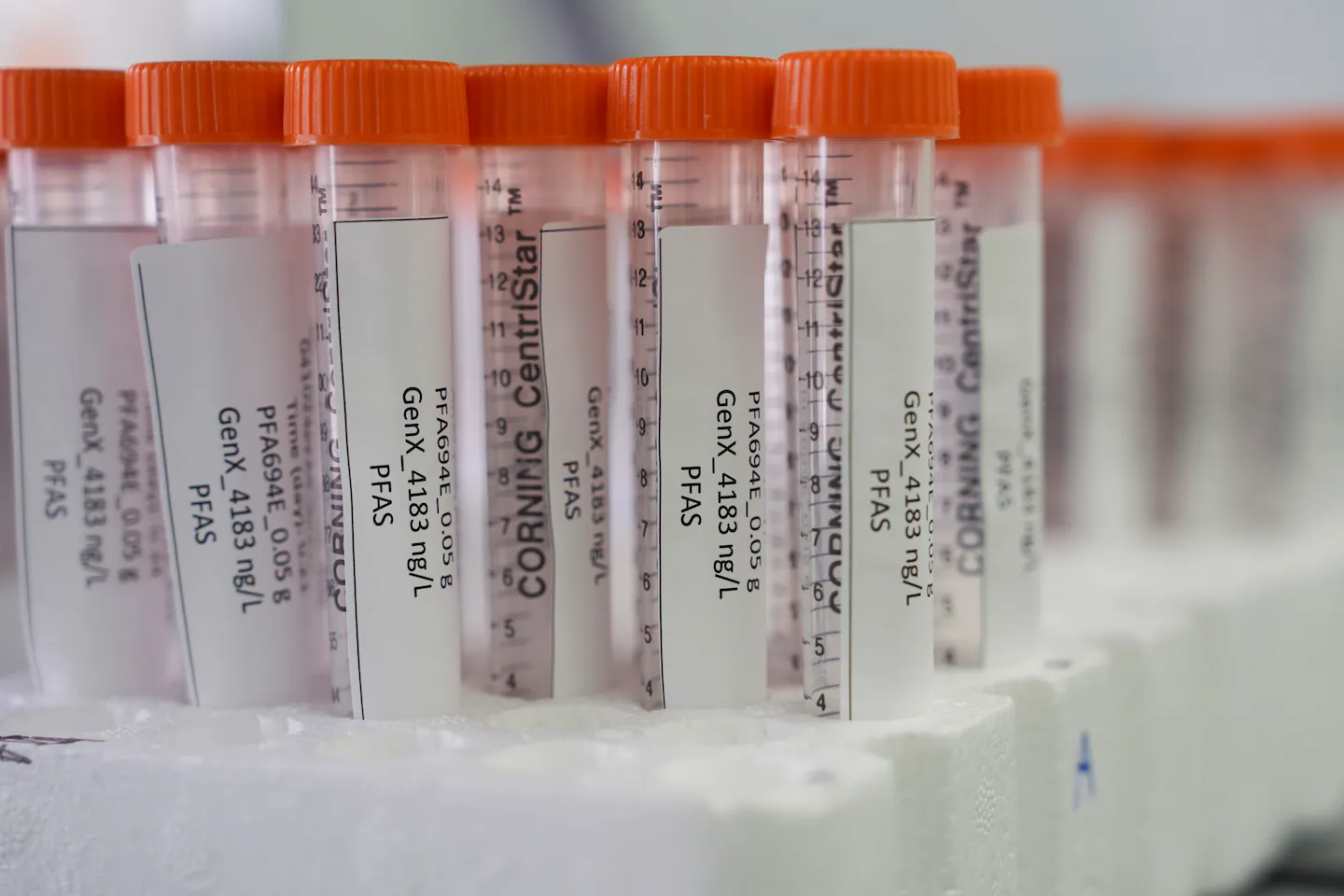
The Pentagon’s new timeline would delay cleanup around military sites by nearly a decade in some cases, according to the latest list, which is dated in March and was posted publicly in recent weeks without an announcement. The delays vary by site. They add up to a significant revision from the Pentagon’s earlier cleanup timetable, which had been released three months earlier, in December 2024, in the final days of the Biden administration.
The Department of Defense, which the Trump administration now refers to as the Department of War, did not respond to requests for comment.
The new timetable comes amid possible cuts to funding for toxic-site cleanups even as the military struggles to address the contamination crisis. The Defense Department has spent $2.6 billion since 2017 to begin investigating the extent of contamination. In some of the worst cases, it has distributed clean drinking water to affected communities.
PFAS, which is short for per- and polyfluoroalkyl substances, are known as forever chemicals because they are so long-lasting in the environment. The Defense Department has said in the past that its wider cleanup effort, which has yet to begin, will take years and billions of dollars to complete.
Now, some communities may need to wait longer.
The Defense Department’s new delays affect some of the preparatory work that must be completed before actual cleanup can begin — for example, the work to identify the most effective cleanup strategies. This preparatory work itself can take several years. As a result, at some of the sites, cleanup might not begin until at least 2039, according to the new timetable.
According to the Defense Department’s list, the preparatory work has been pushed back for about 25 percent of the nearly 600 military sites with known PFAS releases. At those locations, the work was delayed by an average of about five years compared with the December 2024 timetable.
Officials in communities near the affected military sites said they have been caught unawares.
“There’s been no discussion of a delay,” said Kristen Mello, a city councilor in Westfield, home to the Barnes Air National Guard Base. Mello, a chemist by training, grew up near the Barnes base, where her father was a lieutenant colonel. “It’s very upsetting and depressing that we haven’t had clearer communications.”
The delays come as the National Defense Authorization Act for 2026 seeks to significantly cut funding for the cleanup of toxic sites. The measure would also undo a ban on the purchase and use of PFAS firefighting foam, raising concerns that more PFAS could be released into the environment.
Defense Secretary Pete Hegseth has come under fire for his proposed budget cuts for the Pentagon. Senator Jack Reed, a Rhode Island Democrat and the ranking member of the Senate Armed Services Committee, has questioned whether Hegseth’s “rushed, arbitrary strategy” would jeopardize national security.
Communities “are sick and tired of roadblocks, inaction, red tape and further delays,” said Senator Elissa Slotkin, a Michigan Democrat who serves on the Senate Armed Services Committee. “This is not a partisan issue, and President Trump and Secretary Hegseth have no excuse here.”
The sheer scale of the cleanup effort is a major obstacle. In a report issued by the Government Accountability Office this year, defense officials described the number of installations nationwide that must be assessed for PFAS contamination as “overwhelming.”
They had little information on where PFAS might have been used at each site, they said, which meant they needed to carry out testing across the entire installation, in some cases covering hundreds of thousands of acres.
There is also no widely available technology that quickly removes 100 percent of PFAS contamination in soil and water, Defense Department officials pointed out in that report, and existing technologies are imperfect and arduous. Removing PFAS from groundwater, they say, requires pumping the water out of the ground, running it through a filter, and then inserting it back.
Under the Biden administration, the Environmental Protection Agency also set new limits on PFAS levels in drinking water, in an effort to protect people’s health. Those regulations also raised the bar on the Defense Department’s cleanups, potentially contributing to delays.
The federal government estimates that cleaning up all of the PFAS around contaminated military sites will take decades and cost nearly $7 billion a year. That figure has surged 1,500 percent from just three years ago as the extent of contamination has become clearer, according to the GAO report.
“It’s a very long-term process, and there’s just so much uncertainty,” Alissa H. Czyz, director of defense capabilities and management at the GAO, said in an interview. “This is going to be a massive effort,” she said.
Even current cost estimates could soon prove to be too low, she said. Ultimately, the cleanup process will take years and potentially as much as a century to complete, the report concludes. It also urged the Defense Department to provide more information to Congress about the process.
“We understand that the DOD is still trying to get a handle on what would be involved,” she said. “But they haven’t really been being transparent with Congress about just how much this could potentially cost.”
A House bill has been seeking to require the secretary of defense to update Congress annually on PFAS funding and cleanup details.
“Communities impacted by PFAS chemicals have been waiting decades for cleanup, and they’ve been kept in the dark,” said Representative Kristen McDonald Rivet, a Michigan Democrat. “When cleanup timelines change, residents deserve to know.”



